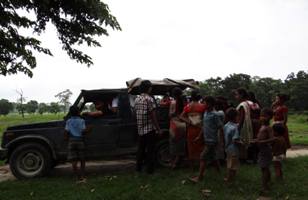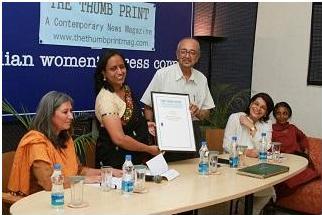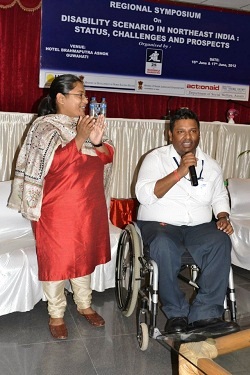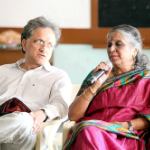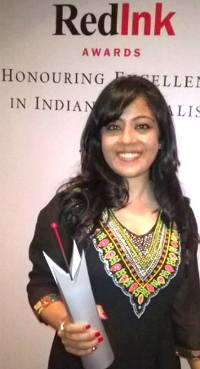Tales of the thumb are stories of fact and fantasy woven from Henry Grey’s Anatomy, Hans Christian Anderson’s Thumbelina, Abanindranath Tagore’s Budo Angla to a host of writers across the across time and nationality. The Thumb Fair of our compulsively communicative species probably grew in tandem with a nuanced vocabulary from thumbs up to thumbs down in all human verbal and non verbal language.
The thumb print in the literate world is apparently the smallest (often derogatory) token of identity. In the many pro-literary campaigns, the seemingly unlettered protagonist (normally a woman) is assumed to be illiterate by the overbearing chauvinist till she pens her name with a flourish! Yet the prints created by the thumb remain the easiest biometric identification throughout the Homo sapien species, irrespective of sex, color or creed. The detective looking for fingerprints through the hand held lens, the criminal wiping the surface clean, the policeman wearing gloves: all to preserve the story that only prints can tell.
The thumb is indispensable to both the thumb print maker and pen pusher. Try using a pen with your toes and you know the value of the precision grip of the thumb. I remember the disdain with which my mother would regard the calculator crunchers for simple everyday mathematics. When she needed to help her well honed mental math skills, she would use the divisions on her fingers with amazing speed. The thumb is the only digit that can glide with cursor like ease and precision across the palm to all the other digits.
The ability of the thumb to fold across the palm makes it the “opposable thumb” one of the hallmarks that separates modern humans from human like ancestors. From the “remote control” clutching couch potato to bowling flighted or spinning ball in cricket the opposable thumb set low down in the palm is indispensible. Even if one can manage the fork, knife and spoon minus the thumb, do try picking up a single peanut with chopsticks and without using the thumb!
The human thumb is a high end version of similar structures found across the primate world with its dedicated blood supply, musculature, nerve and brain connect. It appears shorter because its third and lower part is attached at the wrist and covered with a thick wad of muscles that give it unique flexibility. Press a thumb pin into a wall and the bunching of muscles in the upper arm powers the thumb through the top of the wrist and palm .The terminal placement of the fingers on the palm and different operational structures make them taller but far less than the napoleon thumb. It seems to be designed for the tool wielding, technology crafting human being, so it makes its graded appearance in the early human like ancestors.
The early human like ancestor with a prototype thumb had a design defect: it was at the end of a forelimb that was set forward and reached below the knees. Perfect for brachiating Tarzan like through the trees but too far out for dexterity. The descent of man has literarily favored bipedal movement, freed the forelimbs from duties of locomotion and weight bearing while making them set back and more dexterous. It gives us excellent throwing ability showcased from cave paintings to time lapse photography at sporting events. Hyper intensive thumb use in the ever evolving mobile telephony revolution may push the thumb in directions that can be retrogressive or progressive.
Dronacharya awards in India commemorate a sporting guru and his contribution. What would you call Dronacharya for his thumb on demand tactics, retrogressive or progressive? The epic Mahabharata gives us no easy closure but does go on to say Eklavyya retrained to fight without a thumb and very nearly upset the top seeded Arjuna. To me it is the perfect portrayal of human adaptability against overwhelming odds and not the perfect guru or disciple. Both Eklavyya and Dronacharya are terrible in their resolve. Can we say thumbs down to being terrible in this day and age and thumbs up for a respect for life? Perhaps then we can leave thumbprints on the pages of time that befit the Homo sapiens sapiens and will remain far from insignificant.

.jpg)



